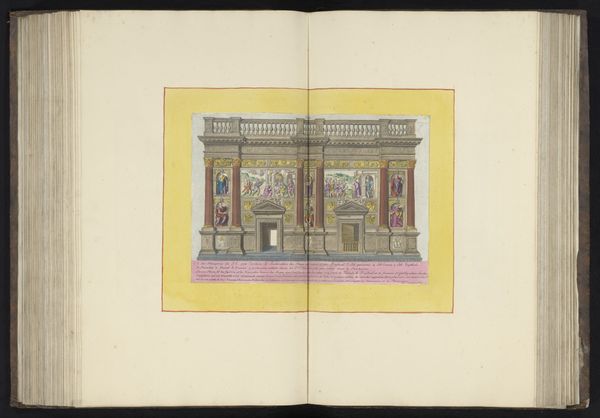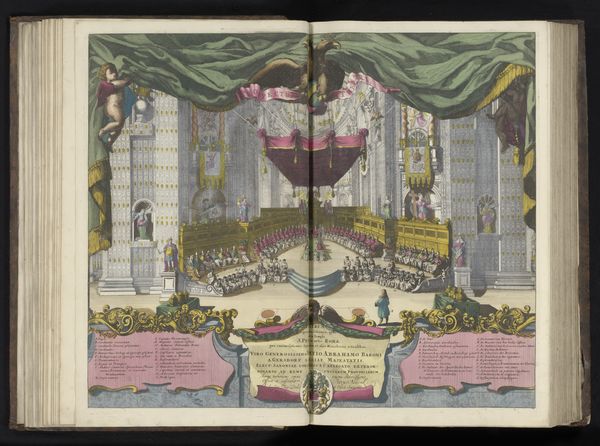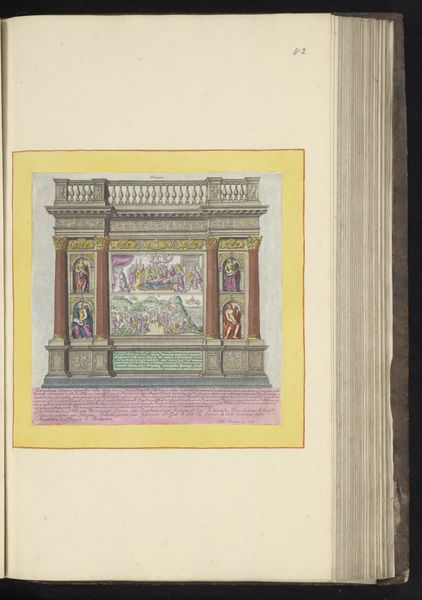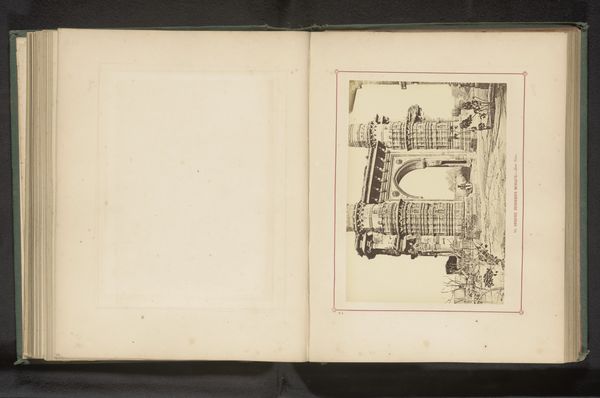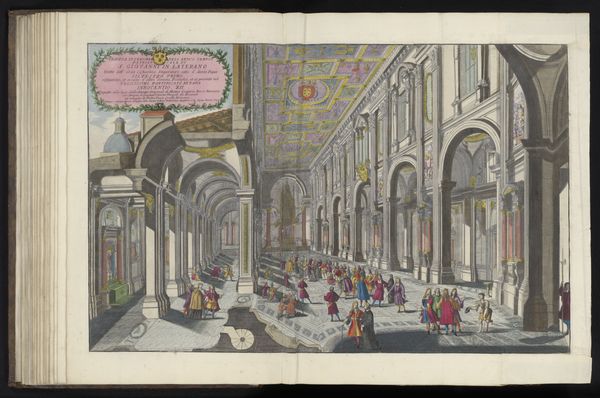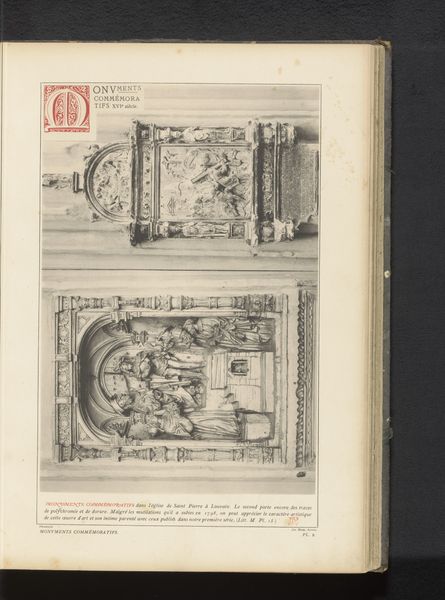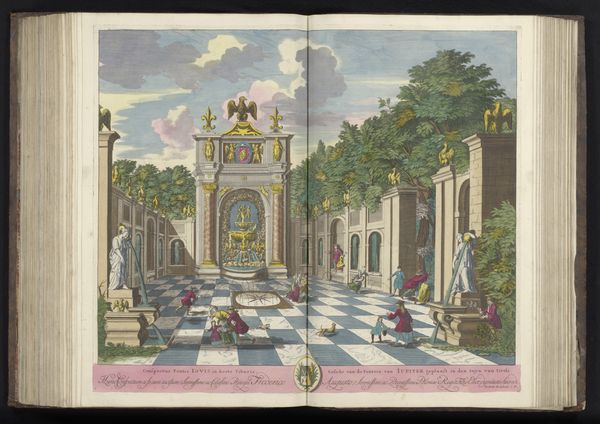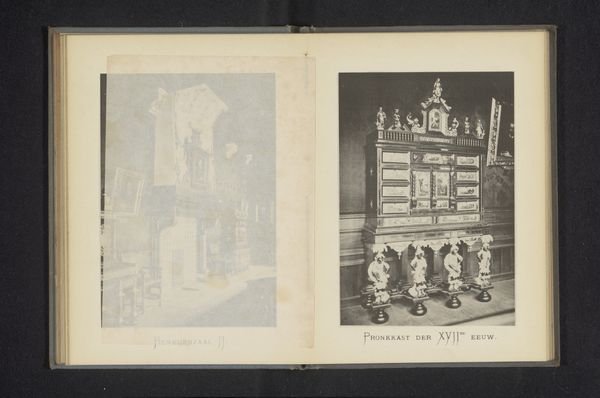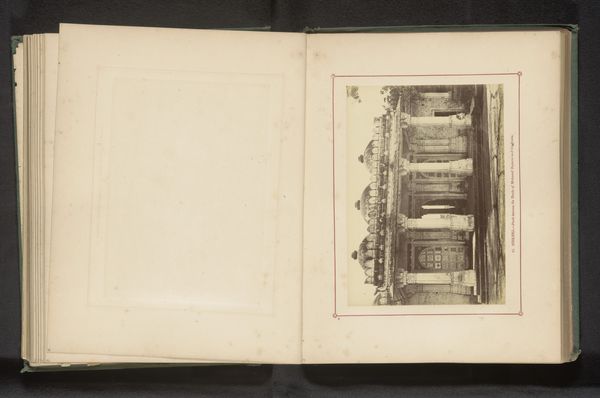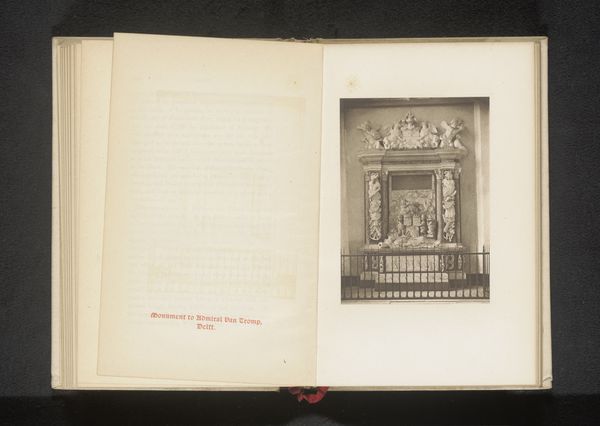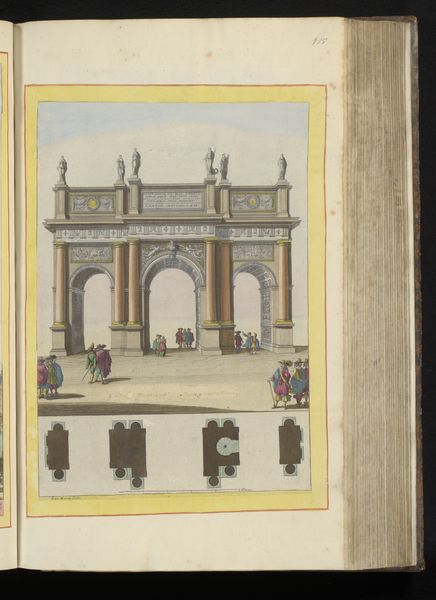
#
aged paper
#
toned paper
#
homemade paper
#
ink paper printed
#
sketch book
#
personal sketchbook
#
coloured pencil
#
sketchbook drawing
#
sketchbook art
#
watercolor
Dimensions: height 190 mm, width 465 mm, height 536 mm, width 620 mm
Copyright: Rijks Museum: Open Domain
Curator: Here we have a drawing, dating back to the early 1700s, whose creator we don't know. It depicts the armory inside the Bastille in Paris. Editor: The linear perspective and overall symmetry are immediately striking. The architecture is carefully delineated, but the color palette lends a certain charm and prevents it from feeling too severe. Curator: Indeed, that tension is quite palpable when considering that the Bastille wasn't merely a storage depot. It served as a prison and became a symbol of oppression and, eventually, revolution. Seeing the orderly arrangement of weapons alongside these figures, all meticulously documented, reminds us of the institutional power dynamics at play. Editor: Absolutely. Looking at how space is rendered here, you see the careful organization, almost like a stage. Note the repetition of the weapon racks and their precise placement, each one contributing to an imposing and regulated feel. The artist seems less concerned with individual expression and more focused on presenting a clear image of structured power. Curator: The presence of people in the armory suggests a working environment, though the uniformity in dress and lack of individual details reinforces their place within a hierarchy. Were these men even meant to be seen as individuals? Or are they rather cogs in a massive machine? The weaponry stored here ultimately fueled colonial ambitions. Editor: And while we're delving into these power structures, one can see it reflected in the composition too: note the horizontal lines of shelves extending to vanishing point and balanced by verticals of classical architectural structures—all communicating stability and order. This control that the artist asserts through organization gives one an emotional satisfaction beyond representing literal fact. Curator: Examining it through a critical lens invites conversations about not only governance but representation itself—who has the authority to document history, and what narratives are intentionally amplified or silenced? The drawing functions as both a visual document and a sociopolitical artifact reflecting 18th-century sensibilities. Editor: Thinking along these lines, the appeal stems from that calculated balance—the artist creates an organized space but retains painterly looseness in execution... Curator: Precisely! An engagement with context is essential to grasp the layers. It shows an environment used as the launchpad for the mechanisms of early capital. Editor: A fitting reminder of how artworks speak volumes, revealing truths beneath even seemingly simple surfaces, however.
Comments
No comments
Be the first to comment and join the conversation on the ultimate creative platform.
